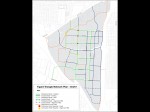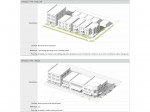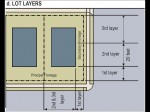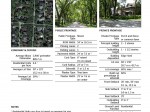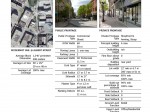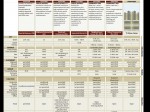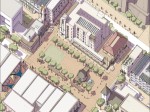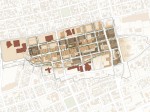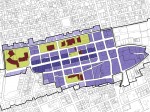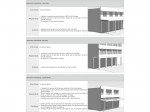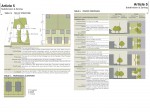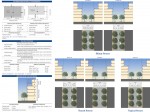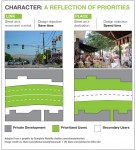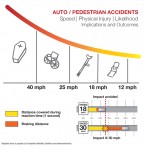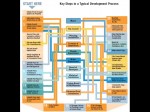A Placemaking Journal
Coding for Character: Doing away with the zoned out nature of our cities
 Having lived in six 100-year-old homes over the last 25 years, autumn always makes me carefully consider what it takes to keep these beautiful elders operational and up-to-date. As we were going through the process of winterizing this year, I am reminded of our recent attempt to modernize by making one small addition that would connect the kitchen to the garage without going through the basement or outdoors. However, a quick look at our development by-law told me that our house is currently “legal non-compliant” because it’s built too close to the house next door. In fact, most of our neighbourhood is the same. So a simple addition along the same lines as the existing footprint is a no-go, even if my neighbours give special permission. This makes our historical housing stock seriously marginalized because it’s illegal to update.
Having lived in six 100-year-old homes over the last 25 years, autumn always makes me carefully consider what it takes to keep these beautiful elders operational and up-to-date. As we were going through the process of winterizing this year, I am reminded of our recent attempt to modernize by making one small addition that would connect the kitchen to the garage without going through the basement or outdoors. However, a quick look at our development by-law told me that our house is currently “legal non-compliant” because it’s built too close to the house next door. In fact, most of our neighbourhood is the same. So a simple addition along the same lines as the existing footprint is a no-go, even if my neighbours give special permission. This makes our historical housing stock seriously marginalized because it’s illegal to update.
This story isn’t news to anyone. But more cities are thinking through the steps for getting into character – both in the residential parts of neighbourhoods as well as on main streets and downtown. Plenty of downtowns have just the opposite problem, where no setback restrictions are in place to keep landowners from building suburban development patterns in the walkable parts of main street, putting buildings in the center of the lot, surrounded by a sea of parking.
In most of the US and Canada, walkability is categorically zoned out. Most of our historic neighbourhoods are “legal, non-conforming” making new neighbourhoods out of character with historic stock, as well as out of line with market demands for walkable places.
The zoning and subdivision laws that govern the majority of this continent require these auto-centric development patterns, that have proven increasingly unhealthy for the people, planet, and profit. A wide variety of interventions are underway to try to reverse this. Some of these are extensive, and others could be called highly effective baby steps.
Baby Steps: Build-to Lines and Parking
The night before CNU Dallas began, a handful of us code geeks went out to dinner. Rick Bernhardt was talking about his experience in Nashville, long before he led the dozens of neighbourhood form-based codes that together have seen $1 billion in new construction (not to mention the econ dev spin-off impacts). Back then, he changed just two things about the existing Euclidean, use-based, auto-centric zoning:
1. Change set-backs to build-to lines
2. Put parking either on-street or out back
- Broadway in downtown Fargo has a very clear build-to line, with 0′ setbacks, creating an outdoor living room, complete with nearby Fargo Bike Shares.
- Tigard, Oregon is establishing an A-Grid and B-Grid to enhance walkability in the Tigard Triangle Lean Code.
- Good enough bones on this downtown Fargo street makes it A-Grid material.
- Setbacks change as we move through the rural-to-urban spectrum of the Transect, changing local character from more rural to more urban. Source: Tigard Triangle Lean Code.
- On-street parking, comfortable sidewalks, and a build-to line make Broadway a great contribution to the downtown Fargo A-Grid.
- Parking belongs in the 3rd lot layer on the A-Grid and on the 2nd or 3rd lot layer on the B-Grid. Source: SmartCode model framework on transect.org.
Granted this wouldn’t work on the super-wide traffic sewers without some street improvements first. But on-street parking can narrow some streets enough to make it feasible. I’d add an additional first step of defining the A-Grid, of the most pedestrian-friendly streets, upping the ante for protection and redevelopment ease there.
Nothing else about Nashville’s code at that time changed, but the development community and business leaders got the hang of thinking in terms of walkable urbanism. They became comfortable. It was a low-cost baby step, but it paved the way for a serious change in city planning, which has now started to positively impact not just the region, but much of Tennessee. Andrés Duany often says,
If I can just control the seam where the building touches the sidewalk, and calm the streets, I can deliver great urbanism.
He and plenty others have proven that repeatedly.
Character-Based Zoning: The Form-Based Code
Form-Based Codes take setbacks and parking to the next level, creating legal frameworks that are more about form, less about use. More about all modes of transportation – car, bus, bike, foot – so more about connected, active, healthy neighbourhoods. Form-based codes put a mixture of compatible uses in a market-responsive format. Plus, these zoning and subdivision regs are user-friendly with graphics and maps.
So what are the steps to implementing an effective Form-Based Code? It’s different in every place, depending on what tools are currently in use. A somewhat exhaustive list includes:
1. Articulate a Vision: comprehensive plan sets policies for compact growth.
2. Sector Plan: this regional plan, as part of the comprehensive plan, indicates intended growth and controlled growth as well as preserved areas.
3. Urban Preference Survey: collects community and market preference for various built forms.
4. Synoptic Survey: measures a range of character zones where neighborhoods are performing well to deliver health, equity and resilience.
5. Equivalency Tables: translates the current use-based zoning categories into character-based zones, simplifying and consolidating duplicate zones as well as creating ranges of acceptable character to create flexibility in a changing marketplace.
6. Illustrative Sites: choose sites that are not delivering for the people, planet, or profit and show how extracting great local character and enabling it by right could develop these sites, showing illustrative plans, sample zoning map, and hand-drawn illustrations.
7. Form-Based Code Text and Graphics: to deliver walkable neighborhoods that are complete, compact, connected, complex, and convivial.
8. Implement the Vision: decide implementation strategy: floating overlay zone; applied to intended growth areas; or applied citywide?
9. Retrofit the Public Realm: as long as the implementation strategy is not sprawl repair, the public realm retrofits may be somewhat minimal. However, most local street sections need adjustment, as overly wide, fast roads are a challenging to walkable places. Most conventional street design standards deliver links, not places.
10. Administration: Keep it simple, intuitive, user-friendly. And most importantly, transparent and streamlined.
- Significant community input is required to articulate the collective local vision. Source: http://www.optinswnc.org/.
- Various growth scenarios help make tough choices. Source: http://www.vivadonaanaudc.org/
- Urban preference surveys help us develop a common language. Source: OurWinnipeg.
- Synoptic survey’s extract the DNA of the highest-functioning urbanism. Source: OurWinnipeg.
- And allows that livable DNA to happen by right … not by special negotiation. Source: OurWinnipeg.
- Equivalency Tables ensure that no one is being downzoned, and translates use-based zones into character-based. Source: ransonrenewed.com.
- Illustrative sites show how the new character-based code would apply to any single location. Source: Las Cruces, NM Downtown Master Plan
- This Las Cruces, NM Downtown Illustrative Master Plan shows how the collective local vision would build out over time.
- This downtown Las Cruces zoning map enables that character-based DNA to keep propagating.
- Form-based regulations are graphically-oriented and easy to use.
- Form-based regulations are graphically-oriented and easy to use.
- Form-based regulations are graphically-oriented and easy to use.
- Retrofitting the public realm is essential. We can’t ask landowners to build to the sidewalk on a wide, fast road, or bad things happen.
- Don’t make administration complicated!
- Don’t make graphics complicated!
Sounds groovy, right? But do these regulatory reforms work? Rob Steuteville reports in last month’s Better Cities and Towns:
Sonia Hirt’s, Zoned in the USA, is one of the more important books on land-use regulations to be published in years and it includes incisive observations on form-based codes. … FBCs have made great progress. Hirt’s research shows that they are the *only* alternative that has gained significant traction.
So here’s hoping that these form-based codes, or character-based development by-laws, are coming soon to my neighbourhood. We’ve been tracking them for the last 12 years on the Codes Study, so let us know if we are missing your work. October is National Community Planning Month, with this year’s theme being Healthy Communities, Healthy People. We’d like to celebrate all moves toward walkable, livable, lovable places.
If PlaceShakers is our soapbox, our Facebook page is where we step down, grab a drink and enjoy a little conversation. Looking for a heads-up on the latest community-building news and perspective from around the web? Click through and “Like” us and we’ll keep you in the loop.



